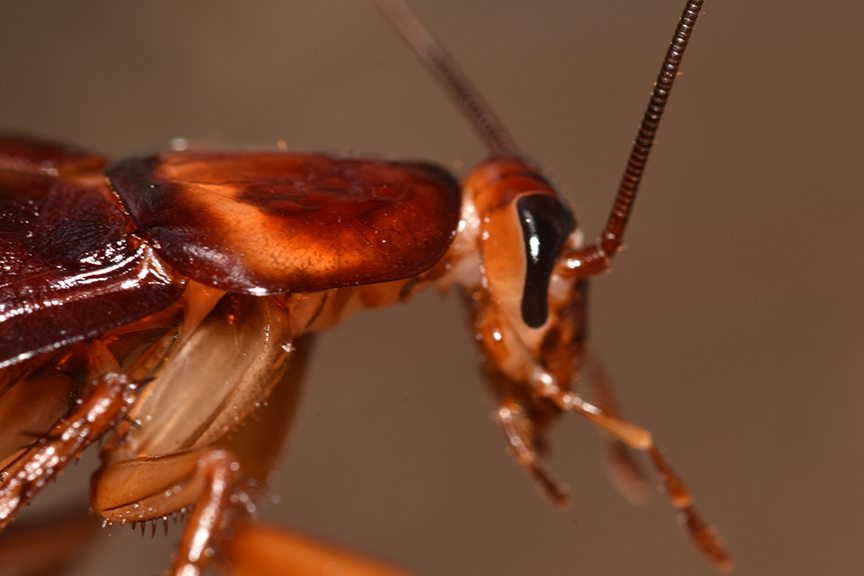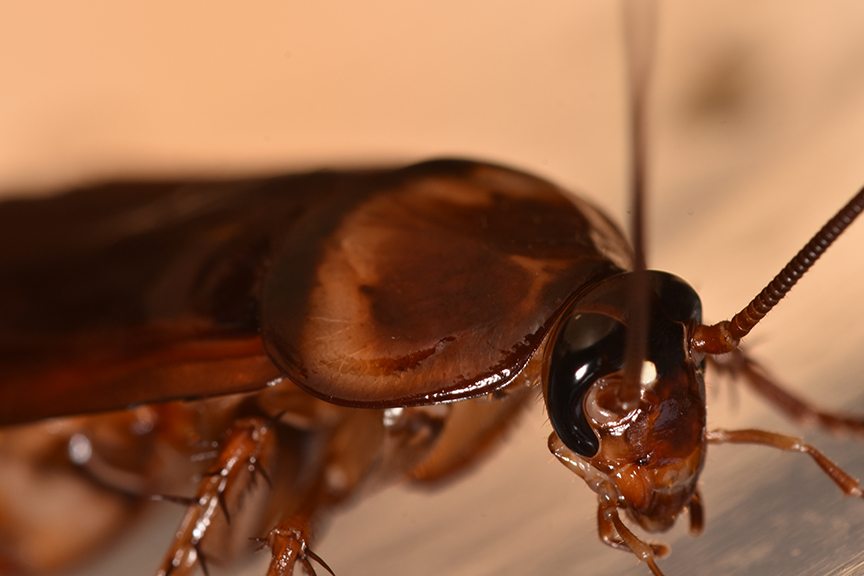American Cockroaches
Of all the pest cockroaches, the American cockroach stands out for being the most reviled. This is primarily due to their large size; adults can be over two inches long, and their filthy, disgusting habits.
These detested cockroaches have a worldwide distribution and go by a variety of other common names like “water-bug” and “palmetto bug”, and more colorfully, the “Bombay canary.” Interestingly, the name “American cockroach” isn’t even apt. This pest is native to the continent of Africa and was brought over to what is now the United States on ships in the 1600s. The only thing that really matters is that the American cockroach is here to stay.
American cockroaches are primarily reddish-brown, but have a lighter colored ‘shield’ over their head. There are a couple other cockroach species that can easily be confused with American cockroaches (the Australian cockroach and the brown cockroach) but only the American is consistently found throughout inhabited parts of North America. Adult males and females have fully developed wings that are folded over the length of their body but are poor fliers. Occasionally, American cockroaches will make a short migration flight en masse
Females put 14-16 fertilized eggs into a special case called an ootheca. Within a few days of forming the ootheca the female will drop it in a secluded place or ‘glue’ it to a suitable surface that is protected and not too far from a food source. Oothecae are brown, cylindrical, leathery in appearance, and about 1/3″ long. On the ‘top’ it kind of looks like a zipped zipper. If you see oothecae in your home, there are (or at least were) cockroaches in the vicinity.
Once the eggs hatch, the tiny nymphs stay close to the hiding place that they share with other cockroaches. Over their development to adulthood, American cockroaches molt up to 14 times, depending on environmental conditions. Shockingly, the time for an egg to develop into an adult can take over two years. Insect are generally known for their short development times but this is not true got all species. In rare cases, adult females have been recorded living almost five years. During her lifetime, an average female American cockroach will produce 10 oothecae (160 eggs), but in extreme cases an individual has produced 90 oothecae. There are several parasitoid wasp species, notably the ensign wasp, that will attack American cockroach oothecae and lay eggs inside that will kill the developing cockroaches.
These are opportunistic pests though, and can hitch a ride inside on or in packaging or slip in through cracks and crevices during warm months. American cockroaches are closely tied to the sewer system in many cities and can make their way into homes through dried bath traps and other vulnerable entry points in drains. Once they have found their way inside they are pretty easy to please. Though they may have a preference for fermenting food, they are quite happy to eat whatever you have left out or is sitting in a trash can, including pet food. Keep any pet food as inaccessible to pests as possible because cockroaches love it as much as your pooch.
If you see a cockroach indoors please let us know because when you spot one there are likely many more around. We can determine whether it’s an American cockroach or another pest species and tailor a control strategy to get fast results for you.
The American Cockroach is found throughout the U.S. They are reddish brown in color and typically poor fliers. Sometimes found in residences, these insects commonly infest commercial buildings such as restaurants, bakeries, grocery stores and bars.


